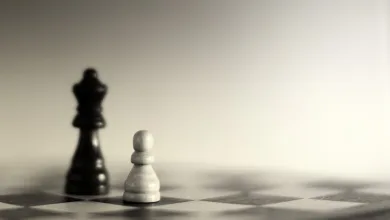Tilting at Windmills Instead of Dragons – This Week in Games

Welcome back, folks! I had a great time at Portland Retro Game Expo last week. We had a weird bit where someone triggered the fire alarm, and we had to wait outside for a few minutes, but it was a great time overall. I got to meet some fascinating artists and people, got to see former-This Week in Games writer Heidi, and got my Taitronica zine from her. I even got to meet Cam Clarke (and was a complete mess during it). Did I find any copies of Izuna: Legend of the Unemployed Ninja? Nope! I only found a single table that had two copies of the sequel—a bunch of the stalls had never even heard of Izuna before. It’s rather humbling to see that the one game you love is much, much rarer than you think. I also had a nice bit with some friends in VR chat afterward; someone made a stray reference to Boktai, referencing “a game with a solar cell in the cartridge,” and it activated my sleeper agent neurons. My buddies learned a lesson of how passionate I am for the Boktai games last Saturday…
This is…
Monolith Celebrates 25th Anniversary; My God, It’s Full of Stars
Ay, time to bring up Xenoblade Chronicles 3 again! Monolith Soft, the esteemed developer behind the Xeno-games (not just Xenoblade, but also Xenosaga and kinda-sorta Xenogears) officially formed in 1999 and celebrated its 25th anniversary earlier this week. And they commemorated that happy event with a cute music video featuring clips from all of their games. No, not just the Xeno-games, all of them.
Monolith Soft’s origins lie with Tetsuya Takahashi, formerly an employee of Square Enix. His proposed treatment for Final Fantasy VII, featuring god-like computers, giant robots, and star-crossed lovers, was passed over as a Final Fantasy game but expanded into its own game, titled Xenogears. Sadly, while Xenogears was envisioned as one part of a sprawling epic, its production troubles left it stillborn; Takahashi would leave Square and found Monolith Soft in 1999 with the help of then-Namco‘s founder Masaya Nakamura. With Namco, Monolith would create the ambitious Baten Kaitos, but also the equally-ambitious Xenosaga series, intended as a second go-around for the ideas and concepts from Xenogears.
Sadly, Xenosaga was too ambitious for its own good; the five-part series was condensed into just three and hasn’t really been seen since the PS2 days. Monolith would also produce other titles like the Japan-only Soma Bringers, Disaster: Day of Crisis, and Namco × CAPCOM (as well as its sequels, Super Robot Wars OG: Endless Frontier and Project X Zone). Somewhere along the line, they were acquired by Nintendo; while we’re normally against acquisitions, Nintendo has managed Monolith Soft well and allowed them to continue to play to their strengths. This led to the creation of Xenoblade Chronicles in 2010. Sure, it took a lot of arm-twisting to get it in America, but it opened the door to a sprawling epic where Takahashi would finally get to tell his story of men and women challenging and defying their fates ordained by tyrannical deities (with lots of Kabbalistic imagery). They’d also serve as Nintendo‘s pinch hitters, greatly assisting with the production of games like The Legend of Zelda: Breath of the Wild and Super Smash Bros. Brawl.
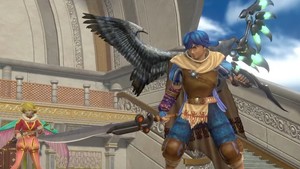
© Monolith Soft
Their anniversary video is simple, showing snippets of Monolith’s past titles (minus Xenogears—that one still belongs to Square Enix). They make sure to frame the video around Noah and Mio, the protagonists of their recent Xenoblade Chronicles 3. while also making sure to bring in the rest of the gang: Shulk and Fiora from Xenoblade Chronicles; Rex, Pyra, and Mythra from Xenoblade Chronicles 2; KOS-MOS from Xenosaga and Elma from Xenoblade Chronicles X. With the Xenoblade games being Monolith’s magnum opus, and with how much Nintendo has benefited from the epic, it’s a small wonder they’re giving the Xeno-crew so much love. The video was also retweeted by Monolith collaborators, composer Yasunori Mitsuda and character designer Saito Masatsugu. Monolith has also shared 25 wallpapers with 25 of their characters for the occasion.
The video also ends with the message “Pioneering the future of gaming—”; certainly an ambitious claim… but not one that I can blame Monolith for. Ignoring the massive help they’ve given Nintendo‘s big franchises, Monolith themselves really know how to make open-world games work on Nintendo‘s consoles—massive, hundred-hour games packed with story and characters running on glorified android devices (and they barely reach 15 gigs in size!). Sure, the games would look nicer on better hardware, but you don’t worry much about framerate when Beyond The Sky finally starts playing.
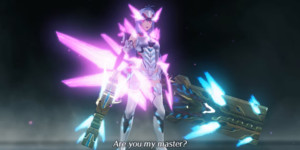
© Monolith Soft
We know Monolith is possibly working on a medieval RPG, given some of the hiring solicitations they sent out starting in 2017. Some folks look at Elma and KOS-MOS in the anniversary video and hope this means we’re getting remasters of their respective games, which would be phenomenal (especially since Xenoblade Chronicles X is one of the last few Wii U games still trapped on that console), but we’ll cross that bridge when we get there. Especially since Preview Guide has kept me too busy to play games, and I really want to avoid burnout for Xenoblade, it’s too special to get burnt out over. But also, I really wanna play Zelda and Mana, guys. Regardless, it’s almost inevitable that Xenoblade Chronicles X gets remade eventually, especially with Nintendo‘s new console on the horizon. I look forward to it, as well as any other surprises Monolith Soft may have for us in the future. We really did end up remembering their names…
Bandai To Produce Monster Hunter-themed Digital Monster Pets
Off the top of my head, there are only two franchises I can think of that put so much weight upon monster poop: Monster Hunter (wherein monster dung can be used as a deterrent) and Digimon (wherein not a single creature has ever been housebroken). Perhaps you’ve said to yourself, “Man, I sure would love nothing more than to clean up after a Nargacuga with a portable form factor!” Or maybe you’ve found yourself wishing that Digimon had more of a rustic survivalist aesthetic. Bandai Namco and CAPCOM have you guys covered! In a wild announcement from last week, we learned that Monster Hunter-themed Digital Monster Color models will be sold on a preorder basis!
As part of CAPCOM‘s celebration of Monster Hunter‘s 20th anniversary, they’ve teamed up with Bandai Namco to produce these pets. They’re no mere reshells, either: actual Monster Hunter wyverns will be attainable and can be raised as pets. It’s all within the Digital Monster format, so there are obviously going to be a few normal Digimon in there—these are based on the Digital Monster Color ver. 1 and ver. 2 pets, so expect some of the usual stand-bys from those rosters like Agumon, Teddymon, Veggiemon, and Gabumon. But the monster selection is also extensive; while they’re split across both versions, you’ll be able to raise Nargacuga, Rajang, Kezu, Mizutsune, Tigrex, and Gore Magala—along with the two showcase Wyverns, Liolaeus (known as “Rathalos” in the United States) and Zinogre. As a bonus, there will be unique Jogress forms (read: D.N.A. Digivolution) for both Greymon and Garurumon with their respective Wyverns: Greymon gets a unique LaeusGreymon form (“RathGreymon,” maybe?), and Garurumon fuses with Zinogre for “ZinoGarurumon” (which rolls off the tongue better).
For folks who might be wondering if that’ll have any quirks compared to the original Digital Monster virtual pets… sadly, outside of the LaeusGreymon and ZinoGarurumon forms, it likely won’t. They’re modified Digital Monster Color v-pets, and as such have all the features from those pets (backlit color LCD screens, rechargeable batteries compatible with Type-C power cables, unlockable backgrounds), but that’s about it. Quality of life features with the batteries aside, the Digital Monster Color pets are fairly vanilla. If you’ve raised a Digital Monster v-pet, the Color ones are the exact same, just with a color screen. Oh, and they cost $60 USD. And if you want one, you’re up the creek because Bandai Namco only sells Digital Monster v-pets on a preorder basis. At the time of writing, they’re not even up on Premium Bandai’s U.S. website, so you have to look for a third-party site to serve as a middleman for them (which means that $60 USD price tag will be more like $100 USD). Unless you’re an absolute mark for these v-pets like I am, I find it hard to recommend these for all but the most dedicated of Monster Hunter fans who also have an interest in Digimon.
In fact, let me lean into this a bit more. See, I really love the Digimon v-pets, and I’m still working on raising a MarineAngemon in my Deep Savers Pendulum Color so I can move on to my Nightmare Soldiers Pendulum in anticipation of the Wind Guardians, Metal Empire and Virus Busters devices coming out later this year. And the Pendulum Colors are fun! Pricey, sure, but the little clacker is satisfying (even if it means my pets tend to die on me when I’m at work because their Training drains super-fast to encourage more playing with the clacker). There are also neat mods for giving your Pendulum Colors a metallic shell, and those are super-snazzy. But it nevertheless disappoints that once you jump past all the hurdles to get your hands on a v-pet in the U.S., you’re getting… a bog-standard Digital Monsters pet with very basic functionality. The unlockable backgrounds and some of the new Digimon being introduced (like Tlalocmon) are neat! But then you look at stuff like Tamagochi Connection, which comes from the same parent company.
The Anniversary Editions of those pets blow a Digital Monster clear out of the water—you can earn in-game currency from mini-games to buy your Tama new toys (which unlock more minigames); pets have far more forms they can age into as they grow (albeit a bit randomized); and there are even exclusive co-op minigames if you link your Pet to another Tamagochi Connect. And then there are the mechanics for your pet falling in love, getting married, and raising Tama-babies (which works even if you never link your pet up). All that, plus a variety of cool shells, and they’re available right now on Amazon, for $30. The Digital Monster X v-pets had a novel RPG system in them wherein your pet could gain experience from battles and gain levels, but Bandai Namco gave up on localizing those after a production kerfuffle with the X2 models. Past that, none of the Digital Monster pets have done anything half as novel as what the recent Tamagotchi pets are doing. And that’s without bringing up all the weird stuff some of the older Japan-only Digital Monster v-pets like the Pendulum X pets, the Accel or the Digivice iC (not to be confused with the other Digivice toys, those aren’t v-pets) could do.
Mechanics of virtual pets aside, this isn’t the first time Digimon has crossed over with other franchises with regards to virtual pets. The Digital Monster Vital Bracelets had a neat Medabots-themed DIM card that allowed you to raise series mascots Metabee and Rokusho, along with Medabot-versions of Greymon (“GreyWars”) and MetalGarurumon (“GaruruMetal”). They even had cute “Medabots” takes on Omegamon/Omnimon with “Omedamon” and “OmegaKnight.” Will the Monster Hunter devices get an official release in the US? Eh, it’s a total toss-up; if you really want one, it’s best you track down an import site that’ll middleman for you (I can vouch for BigBadToystore and ZeninTCG). And don’t dawdle on those preorders; they end faster than you expect.
Fighting Game Lightning Round: News From Tokyo Game Show
Another Tokyo Game Show come and gone! I sadly couldn’t go, what with my being in Portland and not Tokyo. But a lot of news was announced! I’ll try to stick to the bigger announcements. As much as I would have liked it, Success Corp didn’t announce any further news about Izuna 3 (especially not at the time of this writing); they instead appear to be prepping the release of a very cute-looking village-building game called Hamster and the Village of the Sun, which releases in Japan for the Nintendo Switch this November 28th. I’m rather surprised they’re not springing for an American release; it seems like it would be a hit with kids or the young-at-heart that are nostalgic for Hamtaro. Anyway, we’re here to focus on fighting games! Some bits of news were called out during the past week.
The release timing for HUNTER×HUNTER NEN×IMPACT will be changed from the previously announced 2024 timing to now release within 2025.
We sincerely apologize for the trouble caused by this delay to the players who are looking forward to the game’s release.
This delay is so that… https://t.co/35PqDSTYi2— Arc System Works America (@ArcSystemWorksU) September 30, 2024
First off, some news about Hunter × Hunter Nen×Impact, Arc System Works‘ fighting game covering the beloved Hunter × Hunter series. Sadly for Hunter × Hunter fans, this game is being delayed to 2025. The delay is for good reason, at least: Arc System Works wants to implement rollback netcode into the game and needs the extra time to make it work. Hey, I’ll take it! The battle to get mainstream fighting game studios to implement rollback netcode (considered a must for any kind of online fighting game to function properly) was a long and bloody one, and I’m glad that mainstream studios have finally taken the hint. If we have to wait a little longer for our games to get the code needed so that we can actually play people online without a match turning into a slideshow, I’m all for it. And it seems the community agrees on that point; they’re pretty unanimous in cheering the addition and are set to patiently await Nen×Impact next year. Folks would also like to see the UI gussied up a bit and maybe see a few extra characters added to the roster, but we can cross that bridge when we get there. I’d offer up some suggestions on characters that would be nice to see in Nen×Impact, but uh… I don’t know much about Hunter×Hunter. I know it’s great, but I’ve only read, like, two volumes of the manga.
We were also privy to a teaser for Dizzy’s much-anticipated return to the arena in Guilty Gear -Strive-! Not much of a look at how she’ll play yet; the trailer seems to focus on showing us that even as a Queen, Dizzy is still the gentle soul she’s always been. Apparently, she and Sol (her dad) have patched things up enough that Sol doesn’t seem to mind her calling him “Dad.” I like Dizzy’s new nun-like outfit; it’s very flattering to her, and the design extends to her familiars Necro and Undine (they’re more like black shadows with feathery shawls from Dizzy’s wings). More to come later in the month as we approach Dizzy’s proper release!
And as a final bit of major fighting game news, two new characters are announced for SNK’s Fatal Fury: City of the Wolves. Street Fighter 6 fans might be having a ton of fun right now with Terry Bogard having recently joined its roster, complete with a ton of love for Fatal Fury‘s history in the fighting game world. It seems that SNK decided to reciprocate because not one but two of the World Warriors are joining the cast of City of the Wolves: Chun Li and Ken Masters!
Yeah, this cameo makes sense. Fatal Fury was developed by ex-CAPCOM devs, and much of what Fatal Fury did iterated upon Street Fighter‘s foundations. SNK and CAPCOM had a chummy rivalry during the heyday of 90s fighting games, culminating in the massive hatchet-burial (and fighting game classics) that were the CAPCOM Vs SNK titles.
On that note, Chun Li being in Fatal Fury: City of the Wolves makes perfect sense; never mind being Street Fighter‘s de-facto leading lady, she’s likely one of the most important female characters in all of gaming, being one of the original members of the historic line-up for Street Fighter 2 back in the day and blazing a trail as one of the first well-known playable women in gaming. That, and the CAPCOM Vs. SNK titles have given her a fun friendship with Mai Shiranui; the two will likely have a lot of catching up to do. But folks might be wondering why Ken was chosen for Fatal Fury‘s cameo instead of Ryu; after all, Ryu is the proper “face” of the Street Fighter series and the closest thing the franchise has to an actual protagonist if not himself being the defining character of the franchise courtesy of his balanced moveset. Sure, Ken has plenty of fans nowadays because his moveset has been differentiated from Ryu’s for ages and ages—but back in the day, Ken was essentially just a recolored Ryu, and the only way you could play an honest 1v1. So why Ken? Well, it’s simple: similar to Mai and Chun Li, CAPCOM Vs. SNK gave Ken Masters and Terry Bogard a fun “frenemy” dynamic, even earning a unique intro where Ken would toss Terry his iconic red trucker cap. With that alone, it makes way more sense for Ken to get the cameo than Ryu (especially since he’d likely be too busy meditating under a waterfall somewhere to fly out to Florida).
Of course, this crossover has far more ramifications than I could point out since I’m mostly a sideline appreciator of the fighting game community. So once again, I’ve tapped Maximilian Dood to help us share his thoughts on Ken and Chun Li in Fatal Fury. Max?
Cool story bro, we’ll make the check out to “cash”.
Finally, while this wasn’t necessarily announced during the Tokyo Game Show, I may as well bring it up while we’re talking about fighting games. Street Fighter 6 has implemented a few costume components for collaborations, like when they brought costume parts to re-create the four Teenage Mutant Ninja Turtles. But with October starting and folks getting into the spooky mindset, they decided to bring in something from their home-grown horror-inspired series…!
A full moon glows. 🌕
A howl pierces from below. 🐺
The Darkstalkers Gala Fighting Pass featuring items from the eerie video game series is coming in October. pic.twitter.com/b785VucHoO— Street Fighter (@StreetFighter) September 30, 2024
Well, folks certainly have a lot of feelings about this one. So, for one thing, we’re getting a Darkstalkers collaboration in Street Fighter 6. That’s awesome! But a lot of people are disappointed that the represented character is, of all choices, Jon Talbain, the werewolf. Now, I’m glad that they chose Talbain; it’s nice to see some representation of one of the other Darkstalkers besides Morrigan Aesland (yes, Virginia, there are other characters besides Morrigan and Lilith). And CAPCOM committed to the bit, even giving the outfit a separate “wolf howl” emote. But some people are nevertheless disappointed that Talbain was chosen instead of, y’know, Morrigan—the character everyone knows and loves.
I think this is okay; it’s a disservice to Darkstalkers to only focus on the Aesland sisters or Hsien-Ko to the exclusion of literally everyone else. Darkstalkers has a ton of neat characters inspired by classic horror monsters; Rikuo the (curiously attractive) fishman, based off of The Creature from the Black Lagoon; Victor, the Frankenstein-esque creation; Dimitri, the vampire killer… part of the appeal of the Darkstalkers characters was their goofy monster mash designs getting stretched and squashed in gruesome and cartoonish ways (like Jedah Dohma inflating people’s limbs with blood until they burst). Also, Talbain in-universe is supposed to be an accomplished martial artist; even if Morrigan is more popular, Talbain fits the setting better. Folks are also disappointed that Talbain’s avatar components are components and not an actual avatar skin, but this works better than just giving the skin to just one character.
Will this bring back the Darkstalkers games? Man, I don’t know; on the one hand, people are extremely loud about wanting Darkstalkers back, but people being loud about wanting a game back doesn’t translate into sales. I think there is room for multiple fighting games from a single company (look at how many Arc System Works has on its plate at the moment, with none cannibalizing each other). But I don’t have a good enough bead on the situation to make any informed claim. And I really don’t need to see opportunists who’ve never played Darkstalker try and turn Morrigan into some banner for their culture war because, I dunno, she has a Scottish accent or her chin is too big. It’s bad enough I lived to see people who’ve never played Dragon Quest more interested in propping up Dragon Quest as some cultural windmill to tilt at instead of actually playing the Dragon Quest games available right now, I don’t wanna see that happen to Darkstalkers.
Normally I’d be ecstatic to have an excuse to talk about Dragon Quest. I love the crap out of those games; the only mainline titles I haven’t played are VI, VII, X, and XI. It was love at first sight ever since issue 133 of Electronic Gaming Monthly (which, surprise-surprise, I saw a copy of at this past Portland Retro Game Expo). The GameBoy Color port of Dragon Warrior I & II basically solidified my love for RPGs, and I’ve been a loyal fan of the series ever since. Sadly, Dragon Quest has never been very popular in the United States. There have been a lot of people talking about Dragon Quest lately, and I wish it was because people finally discovered the emotional story about a boy growing into a husband and father in Dragon Quest V: Hand of the Heavenly Bride or the wealth of freedom in Dragon Quest IX: Sentinels of the Starry Sky or, hell, the loveable cast of Dragon Quest VIII: Journey of the Cursed King.
But that’s not the case. People are talking about Dragon Quest because it’s become a talking point in the culture war over a character design change and gender options being replaced with a binary “Type A/Type B” selection.
I haven’t brought up any of that until now because it’s all transparent grifter nonsense. These factors have no bearing on the game itself, its story, or its cultural impact over the past 36 years. They do not affect the mechanics or how the game is played. It is as hollow and meaningless as the gnashing of teeth over pronoun selections in character creation modes, a battle in the culture war that is desperately seeking its own validity where it has none.
People claim it’s “a travesty to the legacy of the late Akira Toriyama,” but Toriyama himself drew the redesigns for the cast before he passed and even okayed the Female Warrior’s redesign for the Japan-only Dragon Quest Monsters: Terry’s Quest remake that came out 12 years ago (which was never even released in the United States). There’s no valid discussion to be had here, no insight to be garnered from any of this: just a lot of opportunists on the Internet who have nothing of value to offer audiences tilting at windmills, propping an unseen enemy as a target for audiences of disaffected gamers to claim some “conspiracy” is afoot, that games—and Japan in general—needs to be defended from a nebulous California-based plot, hopping from talking point to talking point once there isn’t any outrage left to mine from a given topic. Because don’t you know, in an industry where longtime inhumane working conditions towards developers, unsustainable revenue practices, and rampant mergers and acquisitions have led to tens of thousands of game developer layoffs this year alone, the real problem games face is that you might be forced to play as a woman or a Black person—or worse yet, a Black woman. The state of the industry hinges on there never being a video game adaptation of Michiko to Hatchin.
This past Tokyo Game Show featured an interview with surviving Dragon Quest producer Yuji Horii and ex-Weekly Shonen Jump editor Kazuhiko Torishima (best known as serving as Akira Toriyama‘s editor and immortalized as the villainous Dr. Mashirito in Dr. Slump). The interview sparked a discussion between Torishima and Horii, which served to toss gas onto the fire for folks in the United States. Many claimed that this was proof of American intervention regarding Dragon Quest, up to and including Elon Musk retweeting the discussion to give an opinion on it. But even early on, it was quite obvious that the conversation was being taken out of context.
Statements from Torishima regarding American Puritanism were blatantly attributed to Yuji Horii, and several Japanese articles stemming from that interview were misconstrued by Americans. Horii made a statement openly wondering “who [was] offended by ‘male’ and ‘female,'” referencing the “types” that replace character options in the menu, which was construed as Square Enix being “forced” to make the change. KosoKoso, the program that hosted the interview, later clarified that the translation of the interview floating around was made by an unaffiliated third party that had mistranslated Torashima’s statements, wherein he was talking about puritanism and not sex education. KosoKoso also delisted the video recording of the interview and requested that people not doctor footage or take their content out of context in the future.
#kosokoso放送局 から皆様へ
日本時間の 9月30日午後、マスク氏が、
メンバーの一部が出演した配信番組の
英語字幕付き(誤訳)動画を転載した
海外のニュースサイトをリポストした件の
騒動と関連報道等につきまして、
出演者から皆様へご報告とお願いです#maadspin pic.twitter.com/1H2ZzsLUqi— ゆう坊&マシリトのKosoKoso放送局 (@KosoKoso_hoso) October 3, 2024
Some had taken the interview as confirmation that some manner of grand conspiracy is to blame for the changes in Dragon Quest III, but any kind of glance at the gaming industry in Japan doesn’t bear this out. Heck, not even the interview itself bears it out. For one thing, by Torishima’s admission, the Dragon Quest series has changed the art in the name of complying with the CERO ratings board in Japan. Dragon Quest being the national institution, it means that it’s in Square Enix‘s best interest to ensure the game can be sold to as broad an audience as possible—hence the aforementioned changes to Female Warrior’s design 12 years ago, as mentioned above. This is no surprise to the Japanese audience at all.
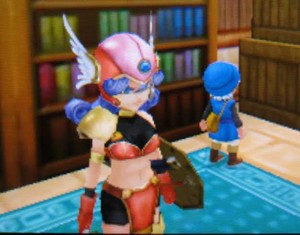
© Square Enix
As for the gender options being changed to “types”—that’s not exactly “new” in Japan, either. Animal Crossing: New Leaf opted out of asking players for their “gender” during character creation, opting to ask players for their “style” instead. Story of Seasons: A Wonderful Life also allowed players to choose their body type separate from their gender while also letting players choose their personal pronouns. In Japan, the game gave players a third “Other” option.
It’s less that there’s any offense over the terms “male” and “female” and more that there is an effort in Japan to recognize X-gender individuals, “X-gender” being the identity used in Japan by gender-neutral or non-binary people. Again, with Dragon Quest commanding such a nationwide following in Japan, Square Enix is likely trying to be as inclusive as possible within its own local population. It’s not like Dragon Quest is any stranger to genderqueerness, either; Dragon Quest XI featured the extremely flamboyant Sylvando, whose story very strongly hints to at his being painfully non-heterosexual. Who knows, maybe Horii doesn’t understand the X-gender community (he’s an old man). But it’s utter nonsense to pretend there’s any American-fueled push to force an agenda when you look at the actual status of the queer community in Japan—there’s a sizeable queer population in Japan, and there’s no reason for Dragon Quest to ignore them. Not to mention, at no point did Horii ever mention anything regarding Americans or sex education or Puritanism.
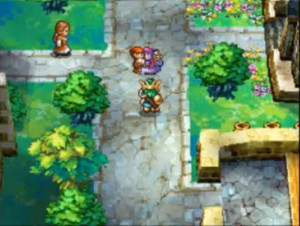
© Square Enix
Being an RPG fan sucked for a really long time. It still kinda does. Final Fantasy as a series became a whipping boy over “effeminate male protagonists” and its melodrama. Kingdom Hearts has ensured that Tetsuya Nomura will forever be associated with “confusing stories” and zonko character outfits with too many belts. Where RPGs used to be a prestige genre courtesy of games like Final Fantasy VII, Japanese RPGs became a problem that needed to be solved throughout the 2000s.
And no series got it worse than Dragon Quest. For whatever reason, Dragon Quest (known in the U.S. as Dragon Warrior until 2005’s localization of Dragon Quest VIII: Journey of the Cursed King) constantly got short thrift. It’s not for no good reason; this past weekend at Portland Retro Game Expo, I was able to watch Jeremy Parish host a panel on Dragon Warrior‘s release in the U.S. and how it bombed drastically—a game that was, at the time of its American release, three years old and far outdated compared to contemporary titles like Phantasy Star, and far surpassed by its later sequels like Dragon Quest III. For reference: Dragon Quest VII was released in the U.S. around the same time as Final Fantasy X and was completely buried over it. It wasn’t until Dragon Quest XI: Echoes of an Elusive Age that more and more people finally gave the series a chance in some way. Make no mistakes, some dumb complaints still exist—look no further than people scratching their heads at the Dragon Quest Hero joining the Super Smash Bros. Brawl roster. It was heartbreaking to see so many people claim that Japanese RPGs were so “outdated” because Dragon Quest, “old” as it was… always felt fun. Not even fun “in spite of it all,” just plain fun.
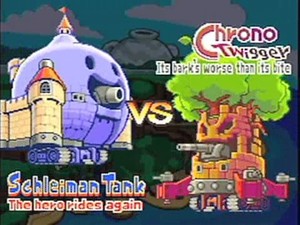
© Square Enix
Dragon Quest III‘s class system likely inherited a ton of inspiration from Ultima‘s classes. Still, it made job systems and reclassing a fun mechanic in RPGs, leading to fun systems like Final Fantasy V job system. Dragon Quest V‘s monster-taming added a new wrinkle to the game and even birthed the entire Dragon Quest Monsters spin-off series. And through it all, Dragon Quest is dripping with memorable vignettes, like the hero’s doomed quest to rescue his petrified neighbors at the start of Dragon Quest VII, or the segment in Dragon Quest III where you become a king and have to save the data for other heroes, or the sad tale of Jona Jones and the Lleviathan (sic) of Port Llafan in Dragon Quest IX.
These are the things that keep people playing Dragon Quest, and it’s for this reason that it gets so annoying to see people talk about turn-based battles as an archaic, outdated system that needs replacing (which ties into people’s problems with Pokémon, for sure). Getting people to notice Dragon Quest isn’t an uphill battle; it’s a goddamn sheer cliff. And the one time the franchise gets noticed in the United States, it’s not because people are finally playing the game. It’s not because someone finally experienced Pankraz’s tragic end at the hands of Kon and Slan. It’s not because they finally saw Torneko Taloon’s happy ending, in which he joyously lifts his son in his arms. It’s because rabble-rousers want to use Dragon Quest as a talking point in a culture war they’ve made up in their own heads.
And the heartbreaking part about this is that once Dragon Quest III HD-2D comes out and it sells gangbusters in Japan—and it will sell gangbusters in Japan, there’s a reason the Dragon Quest overture played during the Tokyo Olympics—the reactionary hordes will have moved on to some other talking point. Would-be pundits who’ve never played a Dragon Quest in their life will never again give the series a second glance, fighting another made-up battle in a war that doesn’t exist against enemies that exist only in their heads. By the time Dragon Quest XII comes to the United States, the ire will have moved onto some other different game where a woman has blue hair or someone’s chin is too big, and Dragon Quest III HD-2D will still have “types” instead of genders as options. All that bluster, anger, and harassment towards fellow fans and creators when you could have just sat down and played a fun game about adventuring around the world. People who claim “they just want games to be fun” can’t even be bothered to just play a fun game, even if this is a hamfisted way of attempting to recognize non-binary or X-gender players… oh well. Better luck next time. There are worse things than stumbling a little in a good-faith attempt at being inclusive.
I think that’s the real reason why events like Portland Retro Game Expo are so important. It’s important to see what it’s like around people who actually like games and enjoy playing them instead of using them as a demagogue talking point.
Dragon Quest III HD-2D Remake releases this November 14 on Nintendo Switch, PS5, Xbox Series X|S, and Steam. Play it, or don’t.
Unreleased F-Zero Goodies Arrive On Nintendo Switch Online
Here we are, over a year out from F-Zero 99‘s release in the U.S. Who would have believed that the game would still be going strong? Even I’m surprised. Even now, more new levels and decals are being added to the game—and these are serious doozies that few would have ever imagined they’d see in the US!
For reference, you may have heard of the Satellaview, a broadcast satellite add-on for the Super Famicom that allowed players to tune into scheduled broadcasts in order to stream a game onto their console. Given its nature, you couldn’t keep the game, but the broadcast allowed for a unique take to these games. BS The Legend of Zelda, for example, was an updated remix of The Legend of Zelda that featured a broadcast soundtrack featuring orchestral music and a voice track. You only had one hour a week to beat the game in its entirety, however. The Satellaview had numerous games made for it, but given their nature, they’re mostly considered lost media. Even in the cases where footage has been found of these games, the broadcast nature of their soundtracks means that their music is nevertheless missing. Someone at Nintendo decided to dig deep into their pockets because it looks like some Satellaview content has been brought back to light!
The latest update to F-Zero 99 includes five new stages for the game, these being stages from BS F-Zero Gran Prix. These stages—Mute City IV, Sand Storm I, Big Blue II, Sand Storm II, and Silence II—encompass the new “Ace League,” just as they did in the BS F-Zero. The update also brings with it new decals for the four racing machines in F-Zero 99, these based on the racing machines from BS F-Zero: Blue Thunder, Luna Bomber, Green Amazone, and Fire Scorpion. Players can also unlock a variety of new badges and emotes as a part of F-Zero 99‘s one-year anniversary.
And the hits keep on coming! If you’ve been missing the GameBoy Advance F-Zero titles, Nintendo has you covered—and then some!
F-Zero: GP Legend gets forgotten a lot. Understandable, since it was an F-Zero game released on the GameBoy Advanced and it’s not F-Zero GX. But it was based on the F-Zero: GP Legend anime (yes, that one) and an otherwise fun little racer all-around. But also easily forgotten is F-Zero: Climax, which never even saw release in the U.S. Until now, that is! It’s unfortunately untranslated (I imagine Nintendo can’t really be bothered to localize a 20-year-old game from a defunct platform, fair enough). But it nevertheless includes Climax‘s level editor. Oh, and the exclusive E-Reader levels from F-Zero: GP Legend. Hey, we can’t get Climax translated, but we can be sure they’ll give us as complete a package as possible.
A lot of folks are wondering if this means F-Zero GX will get some kind of re-release, but I’m not holding my breath. Nintendo probably just decided to make some old games available again (and we know for sure that someone working on F-Zero 99 is a true believer that can and will move mountains). The return of the two Golden Sun games hasn’t led to a new title, after all, and the releases for Legendary Starfy hasn’t led to a new Starfy game either. Let’s just appreciate this for what it is: a long-ignored series getting some seriously deeply-set love. If Satellaview levels and an unreleased game finally being brought to America can’t move your F-Zero loving heart, I don’t know what will.
And because we’re all in the mood, here’s that scene from the F-Zero anime.
Let’s wrap up with some quick tidbits
That’ll do it for this week. Once again, I’m encouraging folks to look up any retro-gaming events in their cities or communities. I understand these will likely be a lot harder for folks who live in more remote areas (I know that a retro-game expo would struggle back home in Puerto Rico), but try to make it out to these places whenever you can. It’s not because of the nerd celebs that might go; it’s because, at the end of the day, it feels good to be around your fellows when they have like-minded interests. It’s nice to see folks light up when their cosplay gets recognized (shout-out to the one cosplayer who dressed up as Marina from Fear and Hunger: Termina). It’s nice to talk shop with people who are equally as passionate about rare or obscure games or local artists peddling wares. The gaming community is better for people who actually work to bring people together and celebrate what they love and worse for demagogues. Be good to each other, I’ll see you in seven.
This Week In Games! is written from idyllic Portland by Jean-Karlo Lemus. When not collaborating with Anime News Network, Jean-Karlo can be found playing JRPGs, eating popcorn, watching v-tubers, and tokusatsu. You can keep up with him at @mouse_inhouse or @ventcard.bsky.social.
Source link
#Tilting #Windmills #Dragons #Week #Games



